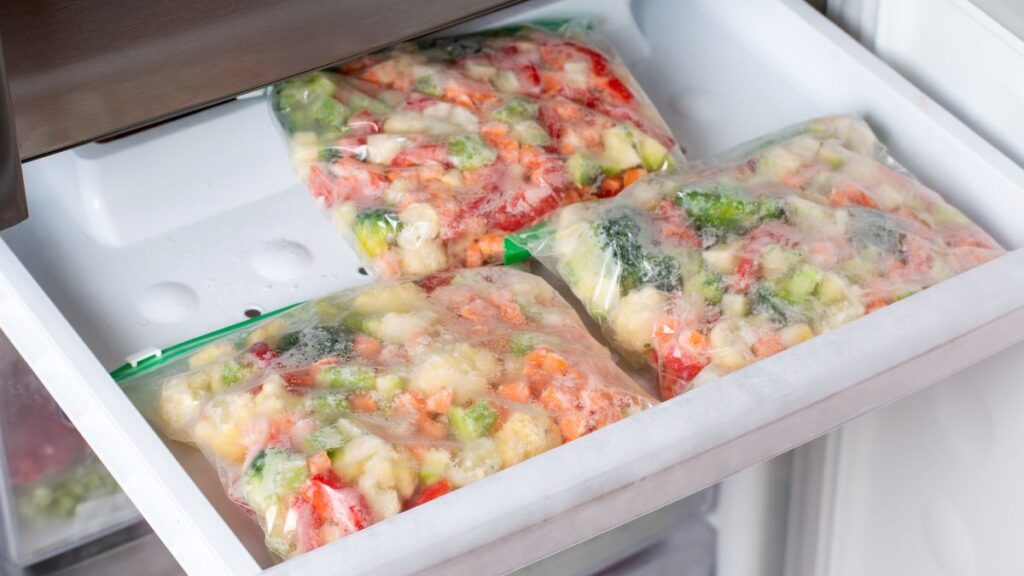Save Money on Groceries with These 14 Clever Strategies
Grocery bills have reached all-time highs, putting immense pressure on household budgets. However, with a little creativity and some strategic planning, you can significantly cut costs without compromising on the quality or variety of your meals.
These hacks will help you shop smarter, plan better, and save money while still enjoying delicious and nutritious food every day. From mastering meal prep to finding hidden bargains, these tips will transform the way you shop and eat.
Plan Your Meals in Advance

One of the most effective ways to save money on groceries is to plan your meals ahead of time. Start by assessing what you already have in your pantry, fridge, and freezer. Use those items as a foundation for your meal plan, incorporating ingredients that are on sale or in season. This not only helps you avoid buying unnecessary items but also ensures that every ingredient serves a purpose.
A well-thought-out meal plan can minimize food waste and reduce the temptation of last-minute takeout. Additionally, you can use leftovers from one meal to create an entirely new dish for another, stretching your ingredients further and keeping your menu exciting.
Always Shop with a List

Walking into a grocery store without a plan is a recipe for overspending. A detailed shopping list based on your meal plan helps you stay focused and avoid impulse purchases. Stick to the list, but also stay alert for unexpected deals on essential items. If you see a great price on pantry staples or frequently used ingredients, consider stocking up.
However, resist the urge to buy things just because they’re on sale if they don’t fit into your plan. A disciplined approach to shopping with a list can save you money and prevent waste.
Buy in Bulk for Long-Term Savings

Bulk shopping is a fantastic way to cut down on costs, especially for non-perishable items like rice, pasta, canned goods, and cleaning supplies. Wholesale clubs and bulk sections at grocery stores often offer products at a lower cost per unit, making it easier to stock up on essentials without breaking the bank.
To make the most of bulk shopping, ensure you have proper storage solutions to keep items fresh and organized. For perishables, consider freezing portions to extend their shelf life and reduce waste.
Take Advantage of Coupons and Loyalty Programs

Coupons and loyalty programs can be powerful tools for saving money. Many grocery stores offer apps or websites where you can access digital coupons, while newspapers and online platforms provide printable ones. Some stores even have loyalty programs that reward frequent shoppers with discounts, cashback, or exclusive deals.
Make it a habit to review these options before shopping, and combine them with sales to maximize your savings. Over time, these small efforts can lead to significant reductions in your grocery bill.
Choose Generic or Store Brands

Switching to generic or store-brand products is a simple yet effective way to lower your grocery costs. These items are often just as good as their name-brand counterparts in terms of quality and nutritional value but come at a fraction of the price.
Store brands frequently source their products from the same manufacturers as national brands, meaning you’re getting comparable quality without paying for the brand name. This switch can be especially impactful for staples like cereal, canned goods, and household items.
Prioritize Seasonal Produce

Buying fruits and vegetables in season is a cost-effective way to enjoy fresher, more flavorful ingredients. Seasonal produce is often in abundance, which drives prices down, making it a smart choice for budget-conscious shoppers.
Planning meals around what’s in season not only saves money but also encourages variety in your diet, as different crops come into season throughout the year. For example, use fresh tomatoes and zucchini in the summer, and turn to squash and root vegetables in the fall.
Incorporate Meatless Meals

Meat is one of the most expensive items on a grocery bill, so incorporating vegetarian or plant-based meals into your routine can lead to significant savings. Ingredients like beans, lentils, tofu, and eggs are affordable and versatile sources of protein that can replace meat in a wide range of dishes.
From hearty lentil soups to veggie-packed stir-fries, there are countless ways to create satisfying meals without meat. This approach not only helps your wallet but also promotes health and sustainability.
Utilize Frozen and Canned Ingredients

Frozen and canned foods are budget-friendly staples that can be just as nutritious as fresh ingredients. Stock up on frozen vegetables, canned beans, and fruits to keep your kitchen well-equipped for quick and easy meals.
These items are often less expensive than fresh produce and have a longer shelf life, reducing the risk of spoilage. Plus, they’re incredibly convenient for busy weeknights when you need to throw together a meal in a hurry.
Cook in Bulk and Freeze for Later

Batch cooking is a game-changer for saving time and money. By preparing large quantities of meals like soups, stews, casseroles, or pasta dishes, you can take advantage of bulk discounts and ensure you always have homemade food on hand. Divide these meals into individual portions and freeze them for future use. This strategy not only minimizes food waste but also helps you avoid the temptation of expensive takeout on busy days.
Transform Leftovers into New Meals

Instead of letting leftovers go to waste, get creative and repurpose them into entirely new dishes. For example, roasted vegetables can be turned into a hearty grain bowl or blended into a soup.
Leftover chicken can be used in tacos, salads, or pasta dishes. By thinking outside the box, you can stretch your grocery budget further while keeping your meals exciting and varied.
Explore Discount and Outlet Stores

Discount grocery stores, outlet stores, and even dollar stores can offer great deals on pantry staples, household essentials, and specialty items. These stores often have lower prices than traditional supermarkets, making them a valuable resource for budget-conscious shoppers.
Take the time to explore these options and see what savings you can uncover. You might be surprised at the quality and variety available at these alternative shopping venues.
Grow Your Own Herbs and Produce

Starting a small garden is a fun and rewarding way to cut down on grocery costs. Even if you don’t have outdoor space, you can grow herbs like basil, parsley, and cilantro on a windowsill or balcony.
Over time, these homegrown ingredients can save you money and elevate your cooking with fresh, flavorful additions. If you have more space, consider planting vegetables like tomatoes, peppers, or lettuce to further reduce your reliance on store-bought produce.
Shop at Farmers’ Markets

Farmers’ markets are excellent places to find fresh, seasonal produce at competitive prices. Buying directly from local farmers often eliminates the markup associated with traditional grocery stores, allowing you to save money while supporting your community.
Farmers’ markets also offer the opportunity to discover unique, locally produced items that can add variety and excitement to your meals.
Stay Flexible and Adapt

Flexibility is key when it comes to saving money on groceries. Be prepared to adjust your meal plan or shopping list based on sales, discounts, and unexpected bargains. For example, if you find a great deal on a particular ingredient, incorporate it into your meals for the week.
Staying adaptable allows you to take full advantage of opportunities to save money while keeping your grocery routine fresh and enjoyable.







